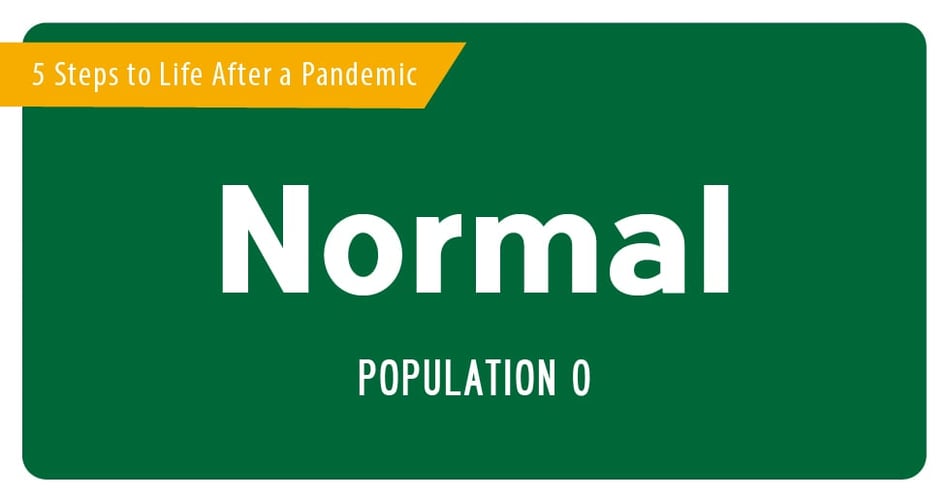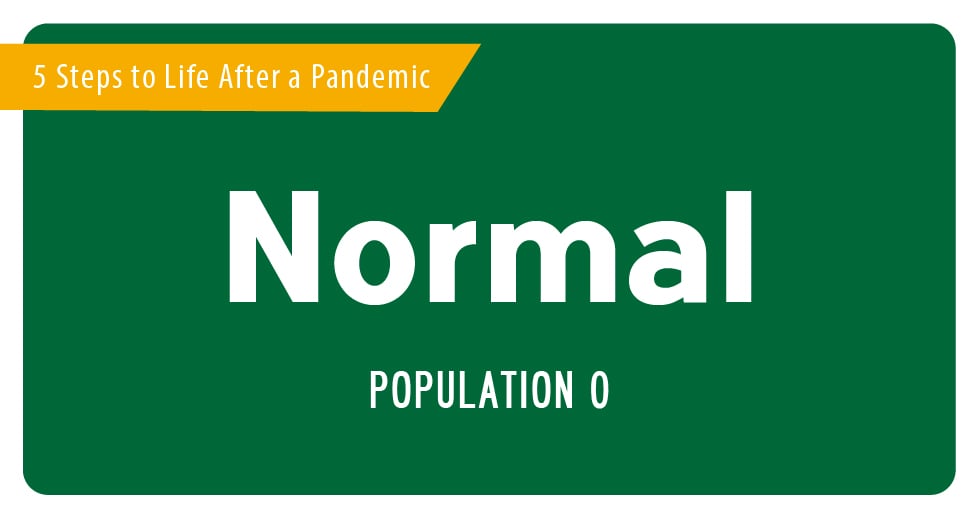5 Steps To Life After A Pandemic

 Masks in the grocery store. Kids learning from home. Supply chains interrupted. Heartbreaking statistics. This is life during the COVID-19 pandemic. During these difficult times, there is probably no more universal question than "When can life go back to normal?" In today's post, we'll look at the critical steps necessary before life can at least start going back to normal and we can all start to rebuild together.
Masks in the grocery store. Kids learning from home. Supply chains interrupted. Heartbreaking statistics. This is life during the COVID-19 pandemic. During these difficult times, there is probably no more universal question than "When can life go back to normal?" In today's post, we'll look at the critical steps necessary before life can at least start going back to normal and we can all start to rebuild together.
#1: Nationwide Viral Testing
Before we can let go of the masks, go back to work, and send our kids back to school, we need to know who has the virus. The reason we are all exercising social distancing is because we don't know who might be infected, especially if we ourselves are infected. The infection can take many days to show symptoms, so it's entirely possible for an individual to go about their daily lives, infecting those around him, and not have any idea he is infected. With nationwide viral testing that is plentiful, easy to access, and quick to provide results, we can know who has to be home and away from other people and who can go about their normal lives.
#2 Serological Testing
Serological testing looks for antibodies in a person's blood. While not perfect for diagnosing infection (antibodies take a while to build up in the blood, so a recently infected person may not have any yet), serological testing is great for knowing whether a person has already been exposed to the virus and has recovered. This data is important because it lets us know who has developed immunity and can return to work. Once a person has been exposed to the virus, created antibodies, and recovered, they are now able to fight off the infection if they are in contact with it again. (That's how vaccines work, too!) This means they can go out and about more safely.
#3 Contact Tracing
Once an infected person is identified, it is important to quickly find everyone who they may have infected and get them tested as well. The infected person identifies who they have been in contact with, places they have visited, and other relevant details, and then personnel reach out to people who may have been exposed to let them know, tracing back all possible connections.Those people can then get tested and self-quarantine if infected. In that way we can prevent further spread. Of course, this step depends a great deal on step #1, nationwide viral testing. (When we are all practicing social distancing, this step is so, so much easier.)
#4 Surveillance
The collection and analysis of data is essential to returning to normalcy. When data about numbers of infections, regional hotspots, and demographic information is available for analyses, we can stay ahead of the spread by looking at trends and anticipating problems. We can reroute supplies, enforce stricter social distancing, or open up more hospital beds. It is through surveillance data that health officials noted the disproportionate impact of COVID-19 on communities of color, including African-Americans and Hispanics. Due to this data, targeted support and services could be identified for these communities. The data will also tell us cases are slowing down, giving us an indication of how close we are to going back to normal.
#5 Vaccine
The first four steps are critical for the nation and the world to begin recovering, but a true sense of security won't be back until we have a vaccine. While several companies are working on a vaccine, the process will take a year or more before they become available to the public. There are so many steps to creating a vaccine: Identifying the antigen to spur the body to make antibodies (or the RNA with the antibody instructions), putting it in a form that will not cause the illness, finding ways to produce it on a large scale, and then distributing and providing the vaccine to the entire population. But it is a comfort to know that we have the technology to create a vaccine, even if we have to wait for it.
Normal life may seem like a long way off. It makes the waiting a little easier to know that what we are doing, collectively as a nation, is helping save lives by slowing the spread of the infection and not overwhelming our healthcare system. We are forever in the debt of those who have helped us get through this difficult time: Nurses, doctors, environmental services workers, delivery personnel, checkout staff, and all the people working behind the scenes to keep us afloat. Thank you!
![EOScu Logo - Dark - Outlined [07182023]-01](https://blog.eoscu.com/hubfs/Eoscu_June2024/Images/EOScu%20Logo%20-%20Dark%20-%20Outlined%20%5B07182023%5D-01.svg)





